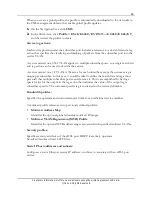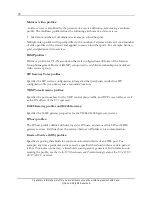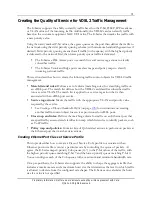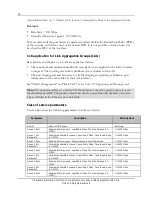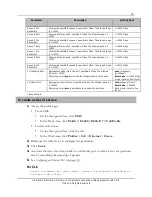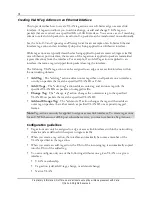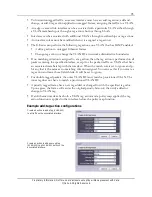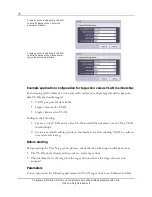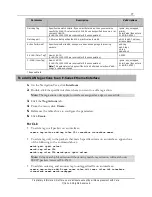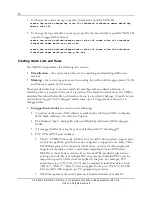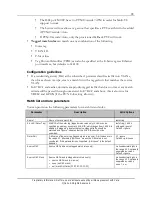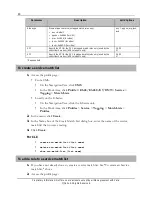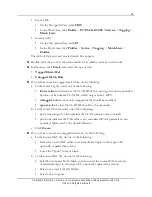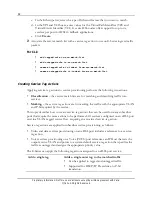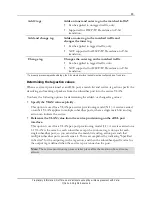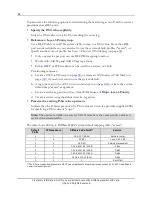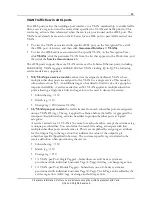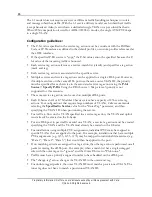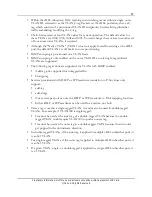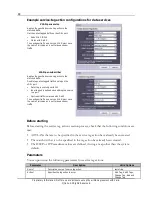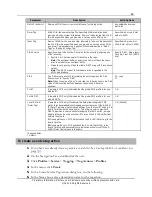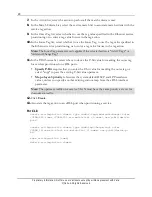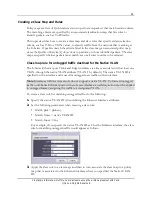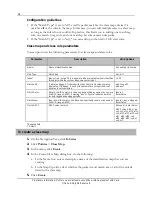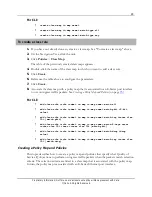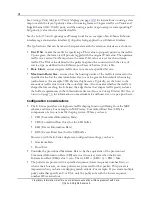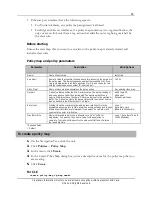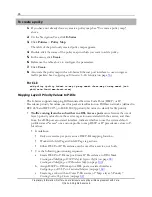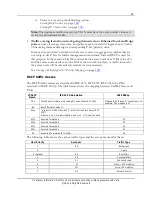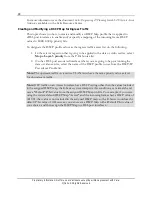
83
Proprietary Information: Not for use or disclosure except by written agreement with Calix.
© Calix. All Rights Reserved.
Add 2 tags
Adds an inner and outer tag to the matched traffic*
Can be applied to untagged traffic, only.
Supported for DSCP/IP Precedence-to-P-bit
translation.
Add and change tag
Adds an outer tag to the matched traffic and
changes the inner tag
Can be applied to tagged traffic, only.
NOT supported for DSCP/IP Precedence-to-P-bit
translation.
Change tag
Changes the outer tag on the matched traffic
Can be applied to tagged traffic, only.
NOT supported for DSCP/IP Precedence-to-P-bit
translation.
*To properly process ingress double tags, the GE network interface (uplink) must be configured as a Trunk role.
Determining the tag-action values
When a service is provisioned at an xDSL port, a match list and service-tag action specify the
classifying and marking of packets from the subscriber port into the service VLAN.
You have the following options for determining the added- or changed-tag values:
Specify the VLAN value explicitly.
This option is used for a VLAN-per-service provisioning model (N:1). A service carried
on an N:1 VLAN applies to multiple subscriber ports, where a single match list and tag
action can indicate the service.
Reference the VLAN value from the service provisioning on the xDSL port
interface.
This option is used for a VLAN-per-port provisioning model (1:1). A service carried on a
1:1 VLAN is the same for each subscriber except the customer tag is unique for each
single subscriber port, so you can define the match list and tag action pair such that
multiple subscriber ports can reference it. This is accomplished by indicating "Specified
in Service" for the output tag in the tag action, and then the subscriber-specific value for
the output tag is defined when the service is provisioned on the port.
Note:
The service provisioning process takes place after the creation of a service-tag
action.

